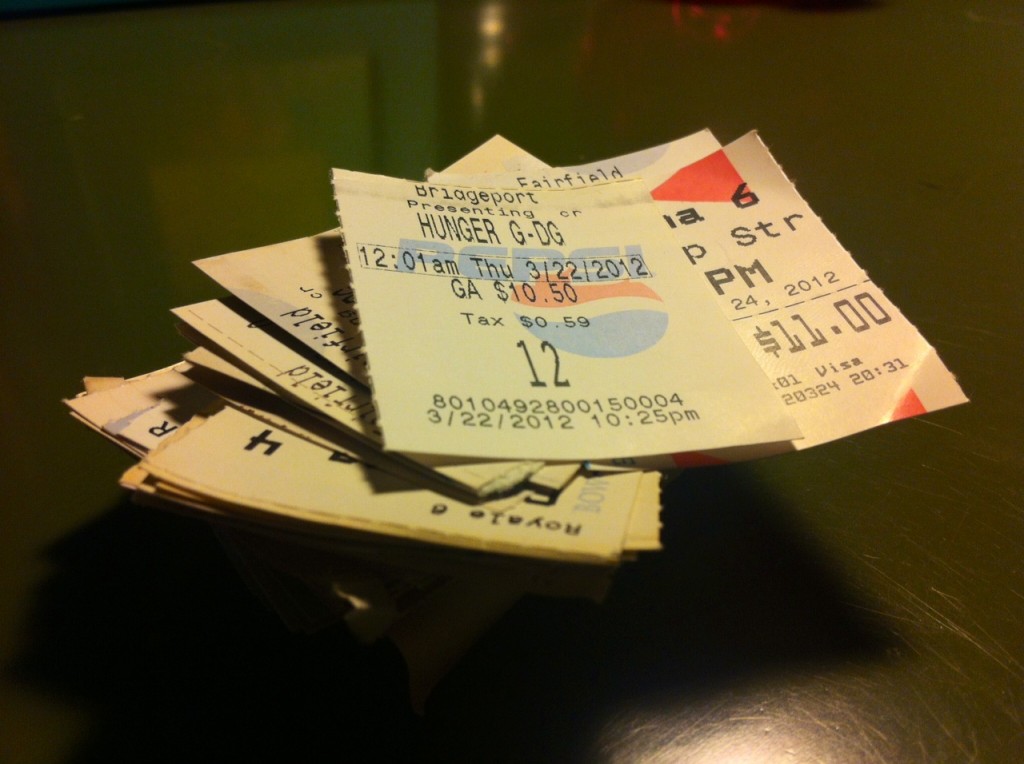I don’t go to the movies very often.
I’m not really sure why this is the case. Maybe it’s the ten-dollar ticket price. Maybe it’s the current rise of 3D movies (cough, gimmick, cough). Maybe it’s the mere fact that during the off-chance that I have some free time to be entertained by a fictitious story, I would much rather do so curled up on my couch at home, catching up on “Breaking Bad” with the help of my good friend Netflix. There’s just something about going to the movies that I find off-putting.
Needless to say, when I do make a rare trek to the movie theater, it’s typically for a relatively-important reason. Exhibit A: “The Hunger Games” midnight premiere. As an avid fan of the series of young-adult novels with the same title, I found it altogether necessary to attend what was sure to be an exciting, memorable event. My expectations were correct! I heartily enjoyed the movie, and I felt that it managed to retain a lot of the marvelously dark and twisted nuances of the novel.
It wasn’t until the next afternoon that I realized that something was slightly odd about the film. As I sat at my kitchen table around 4:00 p.m. with my head in my hands, thoroughly exhausted due to the sheer fact that I had received somewhere in the vicinity of three to four hours of sleep the night before, my mind drifted to the on-screen marvel that I had recently been witness to. I thought about the special effects, the costumes, the music, and the violence… the violence.
That’s when it hit me. “The Hunger Games” is a remarkably violent movie, especially considering the fact that is being marketed to young teenagers. While little direct violence is depicted in the film (aside from a bloody spear being pulled out of a little girl’s chest), it more than makes up for this with continuous shots of knives being thrown and subsequent blood spatters appearing on nearby rocks, all accompanied by the sound of children screaming (quite literally) bloody murder.
The film is rated PG-13, according to the Motion Picture Association of America’s (MPAA) widely-used film-rating system. In reality, a PG-13 rating means nothing more than “Parents strongly cautioned.” If an eight-year old would like to see “The Hunger Games” without a parent or guardian present, he or she is perfectly able to do so.
On the other hand, a documentary called “Bully,” which deals with the current rise of teen suicides due to in-school bullying, was slapped with an R rating by the MPAA because of intense swearing by one of the real-life bullies in the film. Because an R-rated movie requires children under the age of 17 to be accompanied by an adult in order to see the film, the sheer amount of kids that “Bully” will be able to affect will be dramatically decreased.
In my opinion, this is completely backwards.
Please don’t get me wrong — I am a huge fan of “The Hunger Games,” and I’m definitely not some kind of prudish person who is afraid of on-screen violence. I just have an issue with the fact that kids are completely free to see a film that glamorizes child-on-child violence, yet they are being held back from seeing a movie that deals with a real-life, incredibly current, and remarkably important issue — all because of a few F-bombs.
There are no two ways about it: The MPAA’s rating system is flawed. In my opinion, the MPAA needs to take its head out from its metaphorical shell and think about which film is more important for young viewers to see: a film that could potentially beget violent behavior in teenagers, or a film that holds a mirror up to a crucial and timely societal issue. I vote for the one that could inspire change throughout this country, F-bombs be damned.
It’s your call, MPAA.














































